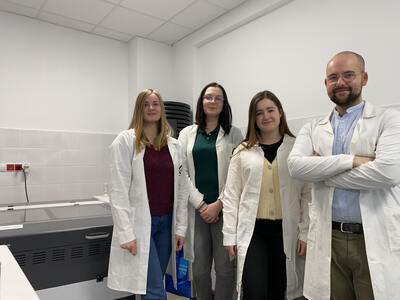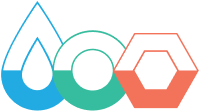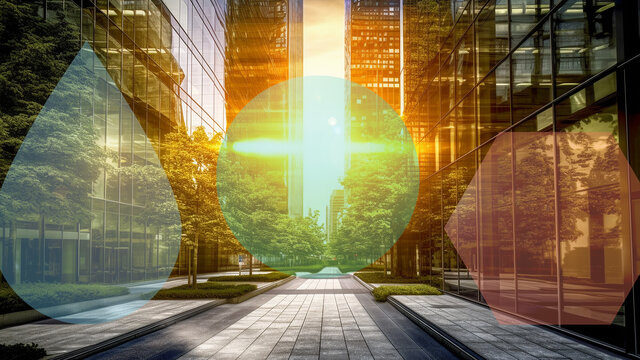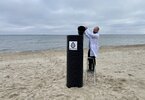Already over 2 billion people globally do not have access to potable water. What are the regions that face problems with water and what are the consequences thereof?
Yes, and in 2025 nearly 3 billion people in 48 countries will have no access to potable water. Currently, this is a cause of one in five deaths of children below 5 years of age on a global scale. As much as 80% of diseases in developing countries result from the lack of clean water or sanitary systems. The problem with water is a global one - it does not concern Africa only, as we all may think. This is the case with lots of Asian countries too - not only poor, but also rich, such as Israel or Singapore, which has to pump water from Malaysia. Problems with access to potable water can be found closer to home as well, namely in Southern Europe, among others in Spain, Portugal, Italy and Malta. After all, Poland is also vulnerable to water shortages during heat waves, although it is mainly related to water retention - we still retain too little. Three times less water falls for one Pole compared to the European average and we are one of the countries with a very high hydrological risk, although we are not quite aware of it.
Water occupies around 70% of the Earth. Most of it is saltwater, but we can desalinate it. Are there any efficient technologies?
Reverse osmosis is a large-scale solution. It requires lots of energy and pressure. To obtain this energy gigantic solar farms are built and it takes a lot of time. Moreover, it is a very costly solution, as the price of such a farm is about 1 million dollars. Few countries can afford it - apart from, for example, United Arab Emirates or Saudi Arabia, which has the largest water desalination stations and their share in the entire market reaches 20-21%. Solar farms are built to obtain energy from them, but it is not enough - they need to be supported with another energy source, most frequently fuel. Therefore, the entire process requires energy, which also generates CO2. What is more, regeneration of membranes applied in reverse osmosis often uses chemicals such as peracetic acid, hypochlorous acid, chloramine and sodium hypochlorite that can have an adverse impact on the environment. There are also smaller mobile reverse osmosis systems that operate at different efficiency rates or water distillation systems or even the ones that condense water vapour from the air. Unfortunately, they are not very efficient either. So far, reverse osmosis systems or membrane systems have been used, but there was no membrane-based solution like ours - using solely the force of gravity it can desalinate water. This is a groundbreaking feature of our NanoseenX.

What is actually NanoseenX?
NanoseenX are nanomembranes that desalinate and purify water, eliminating such contaminants as micro- and nanoplastic, bacteria, viruses, anions, cations of light and heavy metals. Moreover, they do not require additional energy or pressure in the filtration process. This is the first and only such solution in the world. To manufacture nanomembranes we use carbon nanomaterials, e.g. graphene, graphite or active carbon. We create various types of nanomatrices - the so-called mixed matrix solutions. We functionalize some of these nanomaterials, meaning that we alter and adapt their structure. Our solution also uses organometallic compounds. We create mixtures to obtain nanomembranes from them - depending on what sort of ions or contaminants we want to eliminate. For example, to desalinate water from the Baltic we use as many as six different membranes. This technology is scalable: a membrane may be small, large, thin or thick. What is more, its cost is very low: 0.08 $ for 12 cm and 0.5 $ for 60 cm. It performs its function for 20 days - after that time it requires regeneration to resume operation. So far, its maximum operational life after regeneration process is 200 days, but we want to extend it to 3000 days. We wanted to create a solution also for those without access to electricity, as it only uses the force of gravity. Therefore, we concentrated on such regeneration methods that are easy for everyone. Moreover, we wanted to eliminate any use of chemicals. One method of regeneration is rinsing with water obtained from filtration. Thanks to NanoseenX we obtain 1000 litres of water daily while in order to regenerate the membrane after 20 days of its basic operational life we only need to use 8-10 litres. The other method uses solar energy, which warms the membrane up and releases an ion or ions. By the way, since this is a hot scientific topic that was spurred during our work, I must add a few words about great benefits coming from the abovementioned release of ions. We are capable of selectively capturing certain ions, e.g. copper, silver, gold, lead, arsenic, magnesium and lithium - the last one is of particular importance as it is used in lithium-ion batteries. Ions can therefore be used in other processes and this is also groundbreaking.
NanoseenX allows transforming saltwater into potable water within 2-5 minutes, without using additional energy and pressure and at low cost. The interest in this solution must be considerable.
As a result of the media hype lots of entities approach us. Last year we carried out real-life tests in Sopot. Now we will go out into the world with it - to our partners in different countries and different climate zones. Water salinity and contamination in those places is not homogenous - all these factors are of significance with regard to tests. We will implement pilot programmes in Singapore, Philippines, USA, Israel, Norway, Spain, perhaps in India and Sweden. There are even more partners: Egypt, Morocco, Chile, Peru and Argentina. Each pilot programme generates costs. Now we are finishing the investment round and will choose several locations around the world where we will send our solution to enable them to carry out such a pilot programme and purchase it afterwards. Obviously, numerous other countries - such as Singapore - work on the membranes, but we have been the first and only ones so far to offer this breakthrough solution. This is why we need to safeguard patents in each country to which we will send our membranes. Therefore we act slowly, sensibly, step by step.
Do you help other entities or businesses with water management?
Companies from Poland and abroad turn to us. For example, on the very large clothing market, in clothes manufacturing sector, there is currently no technology that would allow reusing water and forming a closed circuit. We are planning to develop a solution for this type of purification within more or less 2 years that would be universal for all companies dealing with this problem. We are conducting negotiations with one of the largest Asian companies that deals with removing micro- and nanoplastic from water. It is an important environmental aspect especially in those countries where water contamination is huge, but it has a lot of importance for public health too. Consumption of such water has impact on cancers or developmental defects in humans, but there are no methods of degradation of such particles. Additionally, wastewater treatment plants display very low capacity to retain such type of contaminants. Thus our work on another solution: NanopowderX, which is going to allow for an efficient micro- and nanoplastic degradation process. We will also create a filter using this powder.

Apart from water desalination and purification you have also created a solution for agriculture and paint additives - what is so revolutionary about them?
We have developed a powder based on nanomaterials, which accelerates growth of plants, at the same time protecting them from pathogenic factors. Its name is NanoboosteX. Thanks to it plants germinate more quickly, are bigger and consume less water. What is more, the powder releases micro- and macroelements: not at once, but at relevant intervals. What is important is that it only “passes” the micro- and macroelements to a plant, does not penetrate into its roots and operates only in a soil. We have created seven versions of this powder - we tested it last year in the cultivation of pepper, first in a laboratory, then in a greenhouse. We kicked off an implementation programme in Poland and Cambodia. We have recently published the first results of Chinese cabbage cultivation. They are very satisfactory, therefore we began the process of registering this solution to be able to start selling it this year. We are testing NanoboosteX also in Cambodia at the cultivation of avocado, which consumes very large amounts of water. We also pride ourselves in the fact that NASA expressed interest in NanoboosteX. We have made it to the second leg of the Deep Space Food Challenge competition, as part of which we are creating automated technology for plant cultivation on Mars. Other strengths of our nanopowder include:
- low price,
- safety in transport, including in space,
- single dosage and low amount needed for cultivation (3 mg per one plant).
Apart from that, we develop nano-additives for paints - NanopaintX - that enhance their functionality. Paints enriched with these additives can absorb air pollution and remove pollens, viruses, bacteria, fungi, dust, mites and toxic gases from the air. These universal additives also boost paint durability, but have no impact on, for example, its colour. We have received an order from Scandinavia - we are working on additives that would enhance paint resistance to, among others, salt and water, and will have anti-fungal or anti-bacterial properties.
You have joined the 3W world - how will the 3W Idea help develop your business?
Owing to 3W we can present our versatility: we combine water and carbon. We use carbon compounds in our solutions. We are associated with water, which - just owing to carbon or, to be more precise, carbon compounds - we can desalinate and purify. Moreover, our flagship solution - NanoseenX is the first and only of such type in the world. Thanks to this we can demonstrate the potential of Polish business and our solutions and the fact that we go neck and neck with the world, or perhaps a step ahead.








